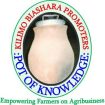Pig farming, also known as piggery, is gaining traction in Kenya as an increasingly viable agricultural enterprise. Beyond its traditional role in Kenyan agriculture, pig farming offers significant economic opportunities and potential for enhancing food security and rural livelihoods. This blog explores the landscape of pig farming in Kenya, the practices involved, challenges faced, and opportunities for growth in this promising sector.
The Importance of Pig Farming in Kenya
Pig farming is an essential component of Kenya’s agricultural sector, contributing to both food security and economic development. The consumption of pork is widespread in Kenya, and pig farming supports many households as a source of income and protein.
Economic Contributions:
- Income Generation: Pigs can be a lucrative source of income for smallholder farmers. With a relatively quick turnaround time compared to other livestock, pigs offer an attractive option for generating cash flow.
- Employment: The pig farming sector provides employment opportunities in breeding, feeding, health management, and processing, benefiting rural communities.
Nutritional Value:
- Protein Source: Pork is a significant source of high-quality protein in Kenyan diets. As urbanization increases and dietary preferences evolve, the demand for pork continues to grow.
Farming Practices and Techniques
Successful pig farming in Kenya involves a combination of traditional practices and modern techniques. Here’s an overview of key practices:
**1. Housing and Facilities:
- Pig Pens: Proper housing is crucial for pig health and productivity. Pens should be well-ventilated, dry, and spacious enough to accommodate the pigs comfortably. Proper sanitation and waste management are essential to prevent disease and maintain hygiene.
- Biosecurity Measures: Implementing biosecurity measures, such as controlling access to the pigpens and ensuring cleanliness, helps prevent the spread of diseases.
**2. Feeding:
- Balanced Diet: Pigs require a balanced diet to achieve optimal growth and productivity. Their diet typically includes a mix of grains, protein sources (such as soybean or sunflower cake), and vitamins and minerals.
- Feeding Systems: Both traditional and commercial feeding systems are used. Supplementing with kitchen scraps and locally available feed can reduce costs.
**3. Breeding:
- Selection: Choosing high-quality breeding stock is vital. Breeds like Large White, Landrace, and Duroc are popular in Kenya due to their growth rates and adaptability.
- Breeding Programs: Effective breeding programs focus on improving traits such as growth rate, feed efficiency, and disease resistance.
**4. Health Management:
- Disease Prevention: Regular health checks and vaccinations are critical. Common pig diseases in Kenya include African Swine Fever (ASF) and classical swine fever. Preventative measures, such as vaccination and biosecurity, help manage these threats.
- Parasite Control: Routine deworming and parasite control are essential for maintaining pig health and productivity.
Challenges Facing Pig Farming
Despite its potential, pig farming in Kenya faces several challenges:
**1. Disease Outbreaks:
- African Swine Fever (ASF): ASF is a major concern for Kenyan pig farmers, as it can lead to high mortality rates and significant economic losses. Implementing strict biosecurity measures and monitoring for signs of disease are essential for managing ASF risks.
**2. Feed Costs:
- Feed Prices: The cost of commercial feed can be high, affecting profitability. Farmers can reduce feed costs by incorporating locally available ingredients and optimizing feed formulation.
**3. Market Access:
- Infrastructure and Distribution: Accessing markets can be challenging due to inadequate infrastructure and distribution networks. Improving transportation and market linkages can help farmers reach consumers more effectively.
**4. Regulatory Issues:
- Compliance: Navigating regulations related to animal health, welfare, and food safety can be complex. Ensuring compliance with national and local regulations is crucial for successful pig farming.
Opportunities for Growth
The future of pig farming in Kenya is bright, with several opportunities for expansion and improvement:
**1. Improved Breeding and Genetics:
- Research and Development: Investing in research to develop disease-resistant and high-performance pig breeds can enhance productivity and profitability. Collaborations with research institutions and breeding programs can drive these advancements.
**2. Value Addition:
- Processing: Adding value through pork processing—such as producing sausages, bacon, and other products—can open new markets and increase income. Establishing local processing facilities can also reduce post-harvest losses.
**3. Sustainable Practices:
- Environmental Management: Implementing sustainable farming practices, such as proper waste management and resource conservation, can enhance environmental sustainability and improve farm efficiency.
**4. Training and Support:
- Extension Services: Providing farmers with training and access to extension services can help them adopt best practices, improve productivity, and manage challenges more effectively. Government and NGO support programs play a crucial role in this regard.
**5. Market Development:
- Market Expansion: Developing new markets and enhancing distribution channels can provide farmers with better access to consumers and improve profitability. Promoting pork consumption and building consumer trust are also important for market growth.
Conclusion
Pig farming in Kenya holds significant promise as a source of income, nutrition, and economic development. While challenges such as disease outbreaks, feed costs, and market access exist, there are ample opportunities to drive growth and improve the sector. By investing in research, embracing sustainable practices, and enhancing support for farmers, Kenya can unlock the full potential of pig farming and contribute to the overall prosperity and food security of the nation.



